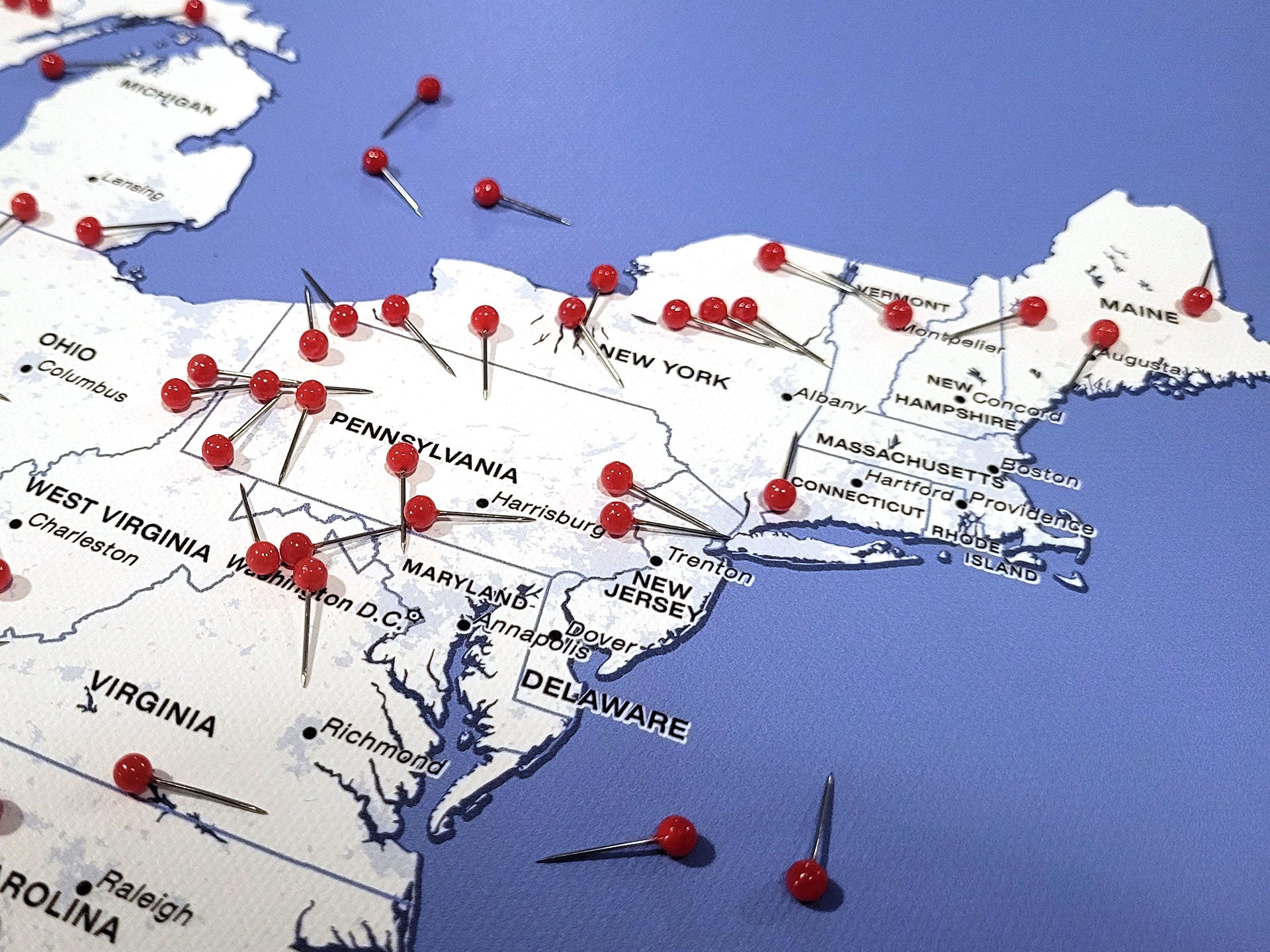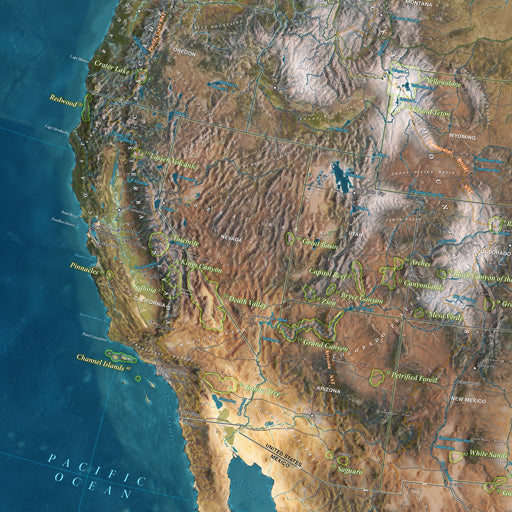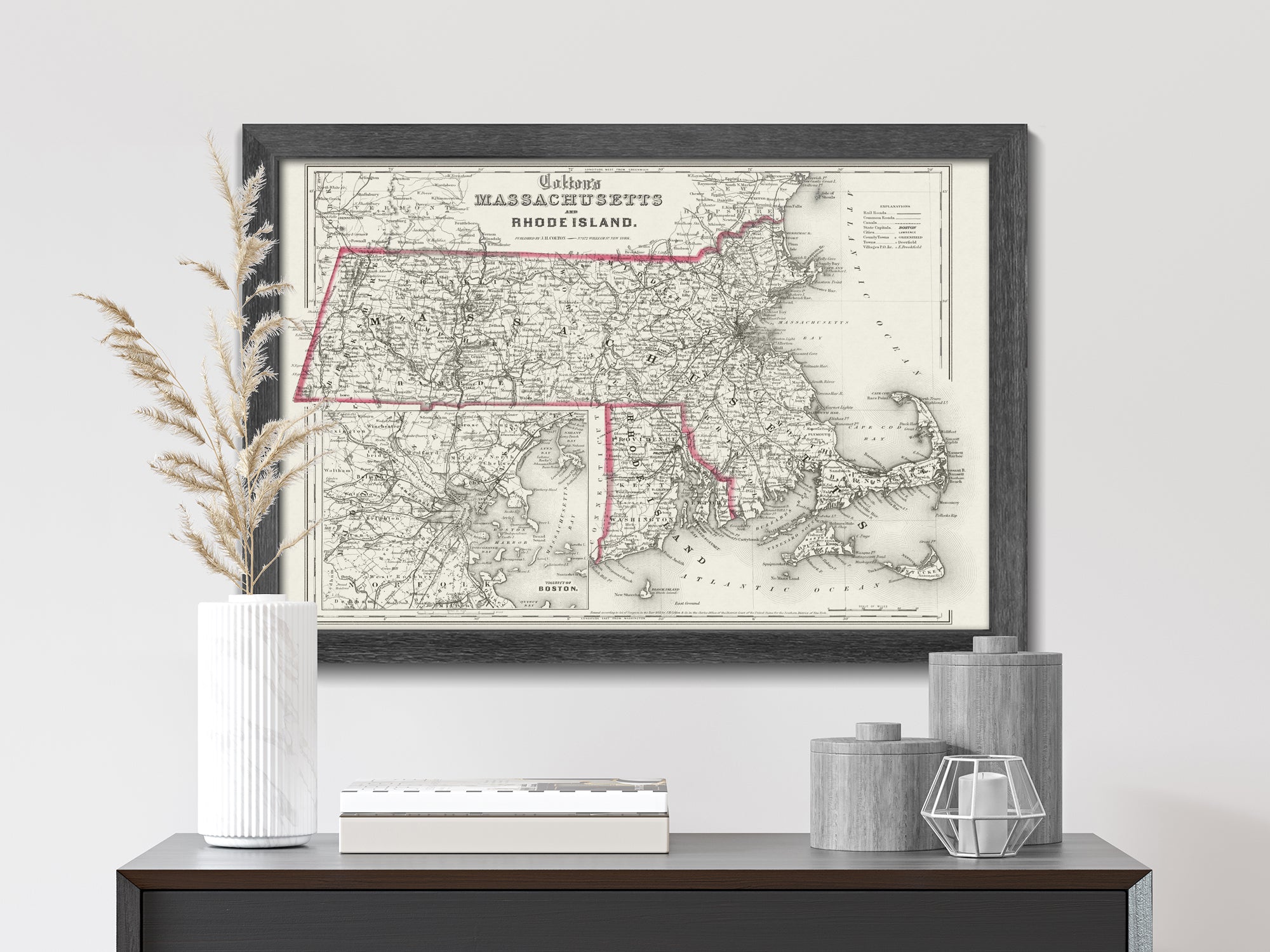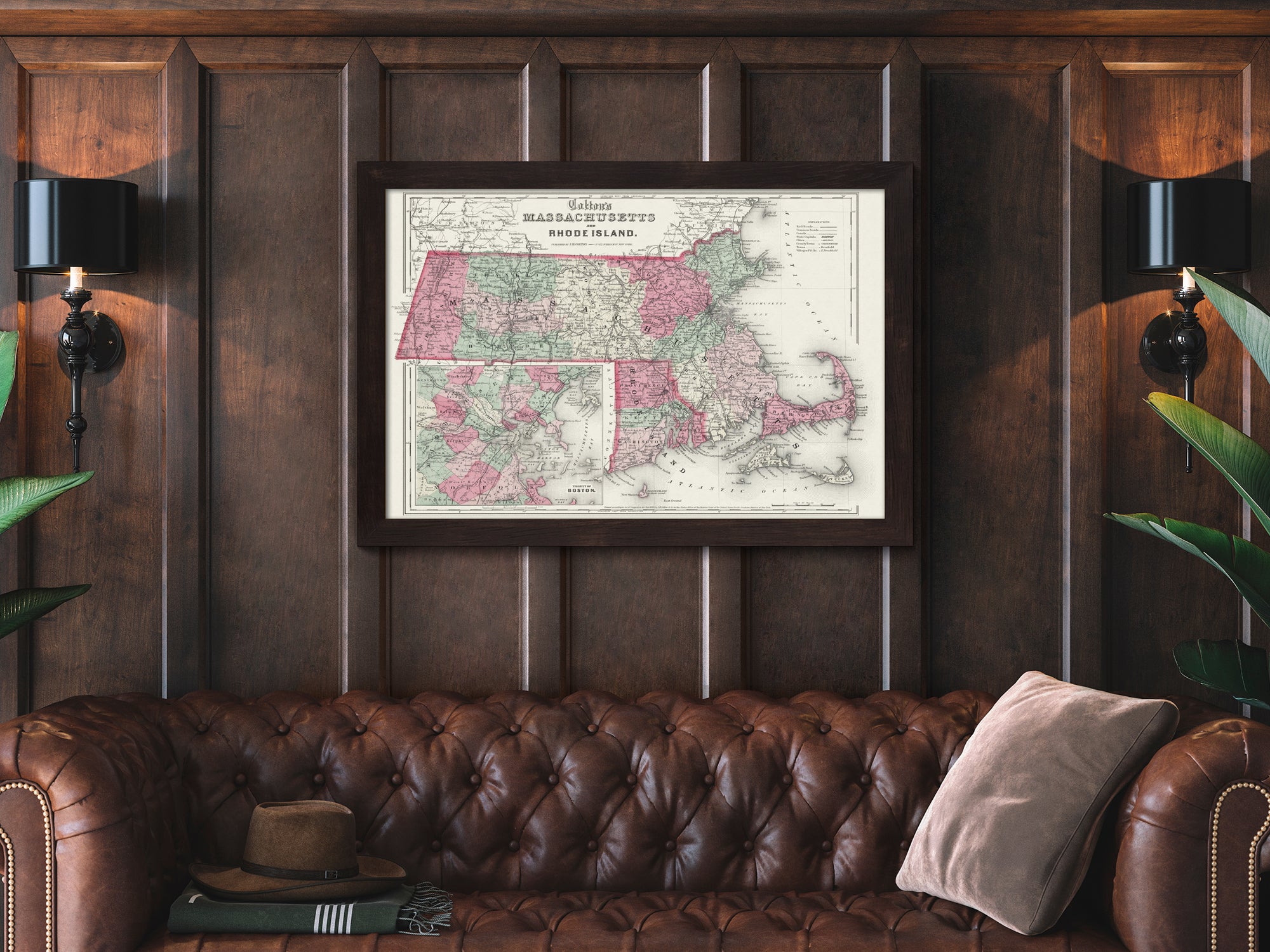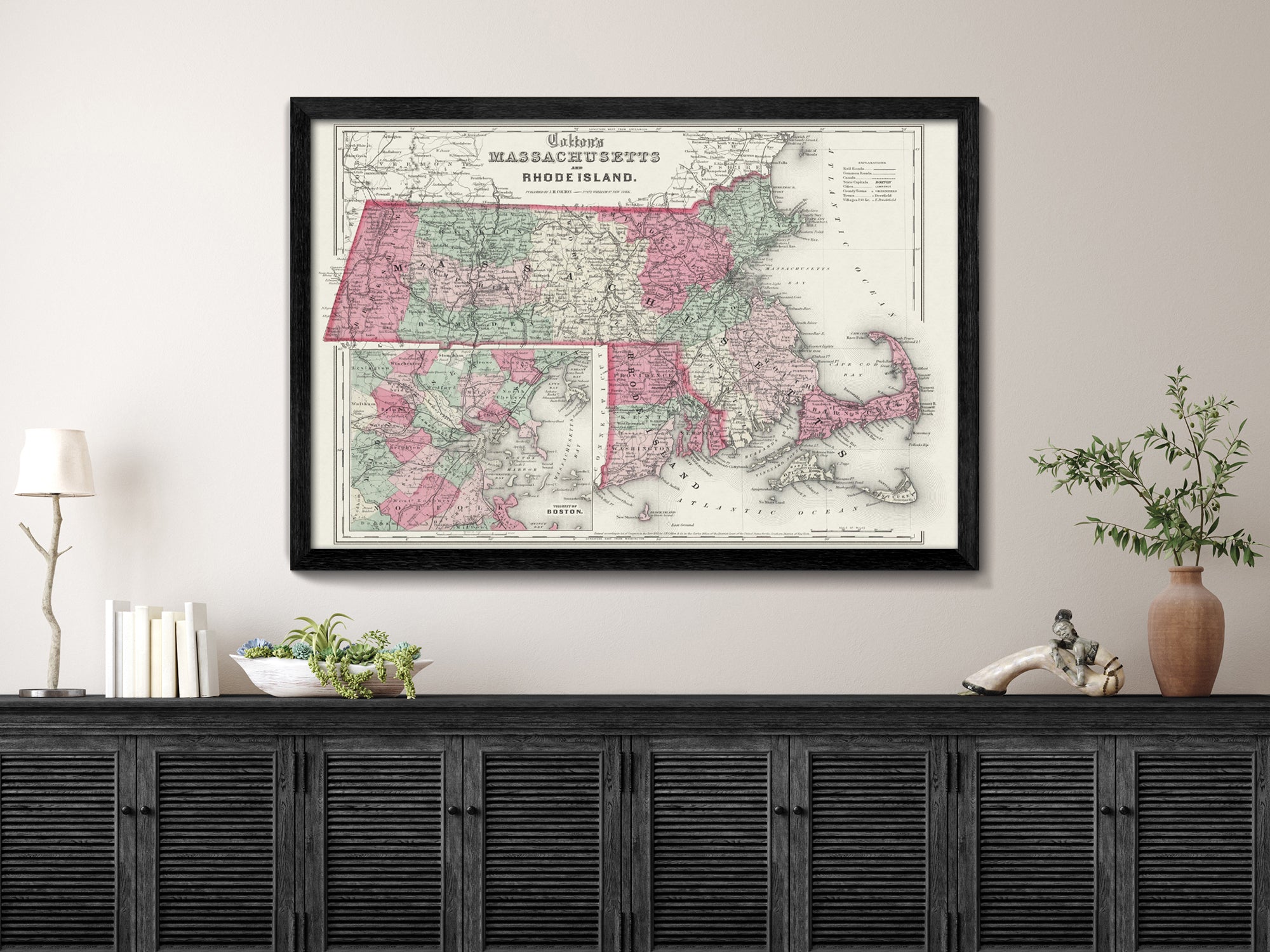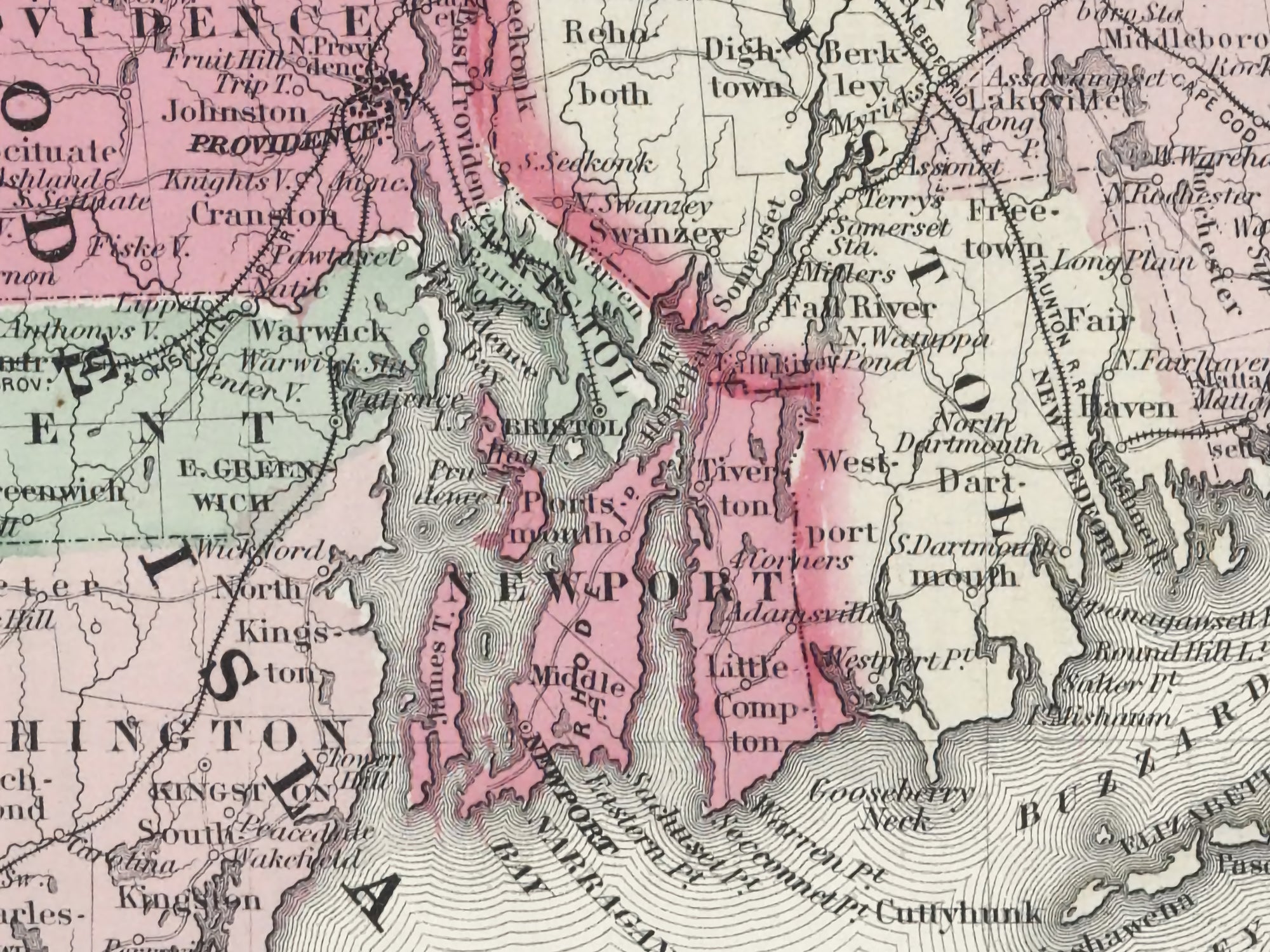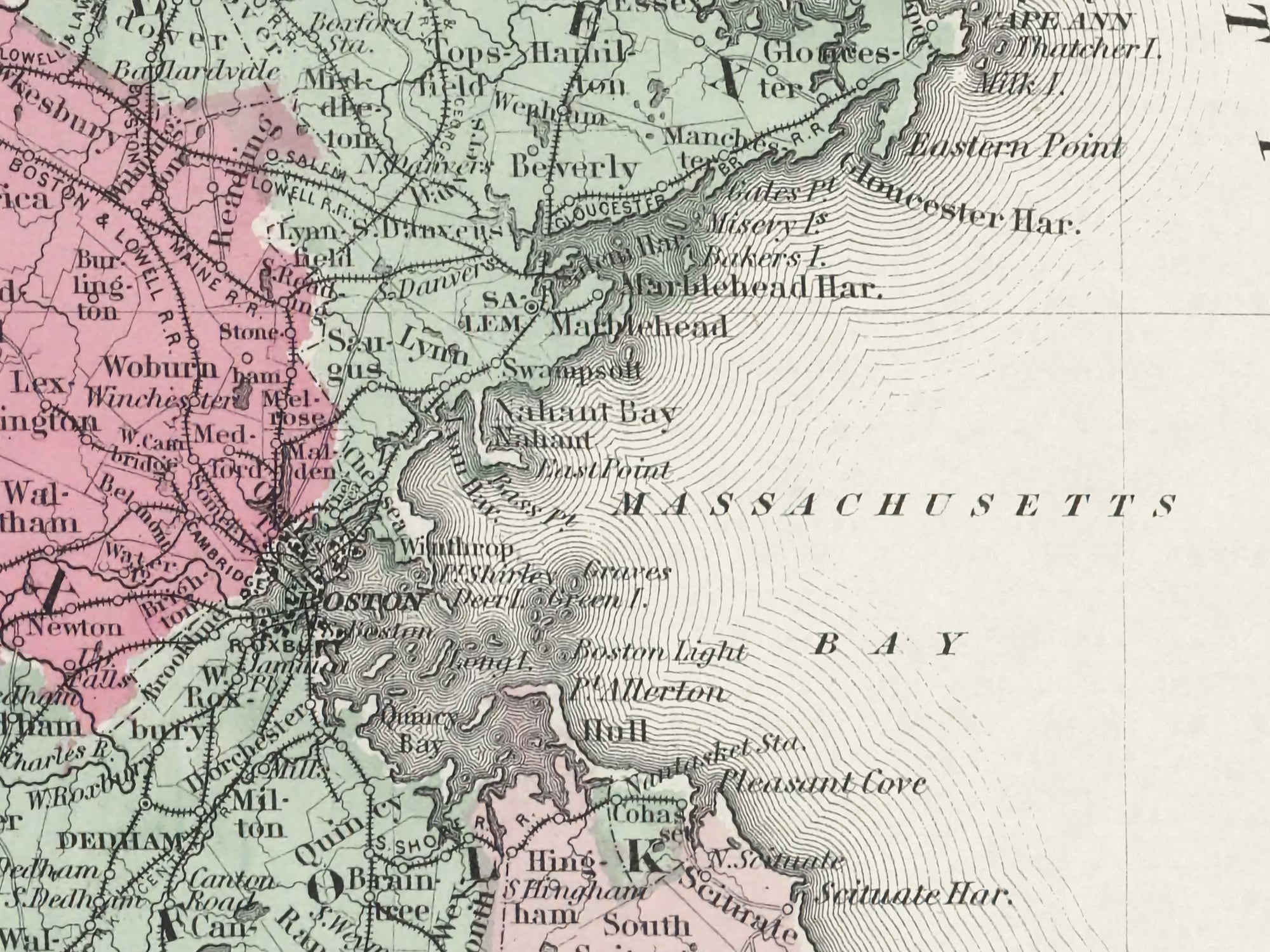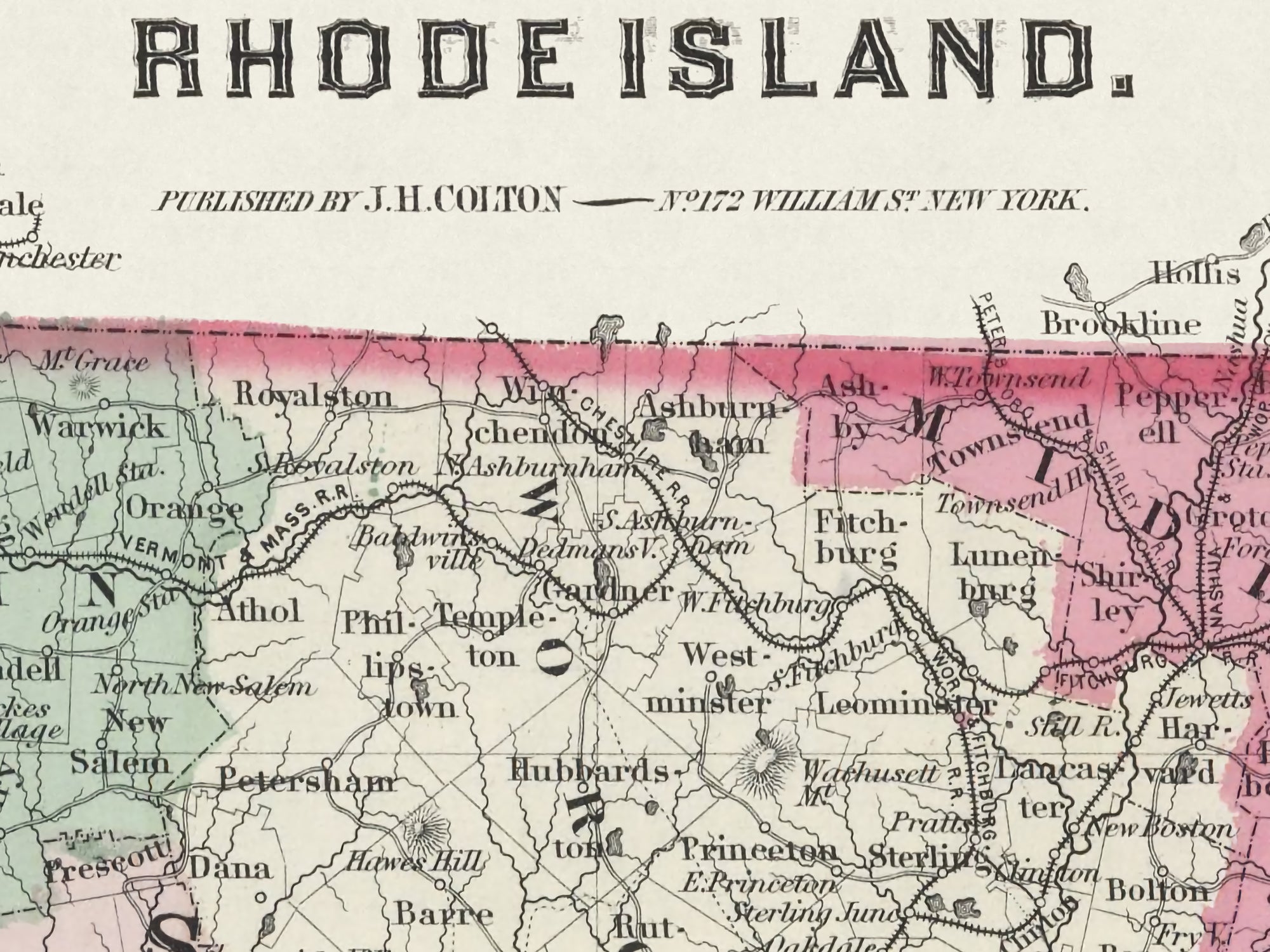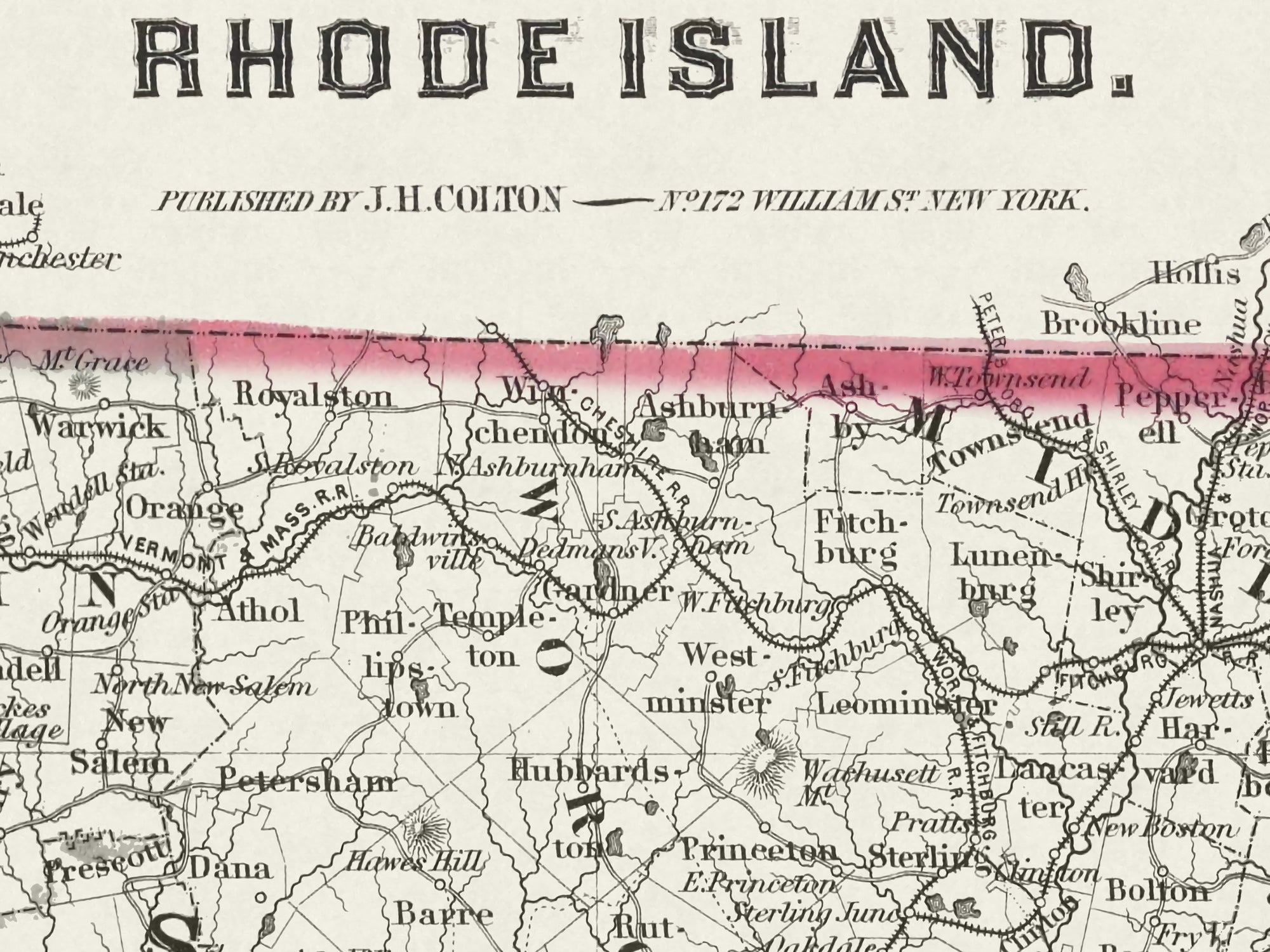This map is a faithful reproduction of the original 1850 map restored to its former glory using the latest digital imaging technology.
Vintage State Map of Massachusetts and Rhode Island
Standard maps will enter production right away, within the next business day. Larger orders may take more time.
All push pin board maps (framed or canvas wrap) include push pins, are easy to hang, and ship free in the continental US. We'll select the optimal shipping method for fast delivery.
For personalized maps we collaborate closely to guarantee satisfaction. Expect a proof to be sent to you. Your swift responses will facilitate the production and shipping process.
If there are any problems with your map we will take care of you. Returns for all maps are straightforward and hassle-free.
For personalized maps, engaging with the email proofs we send ensures that the final product meets your expectations precisely.
We have 30+ years of cartography experience, meticulously craft each order by hand to ensure excellence, and 100% guarantee your satisfaction. We produce maps that are built to last, with state of the art production and archival quality materials.
Customize with quotes, legends, or dedications using "Personalize Map" options to craft your masterpiece map. Or reach out to us if you don't see the option you want.
We collaborate with you from design to approval of your proof so that you are 100% happy before we print and ship.
Our excellent customer service is always open to you.
Restored 1850's Map
Fine Art Quality
Impressively produced with Archival Inks, Rich Color Depth, and clear and vivid labels. We use premium matte paper.
Expert Craftsmanship
We prepare the map using Fine Art Giclee production techniques. We roll the map in a sturdy tube for shipping to provide a crease-less piece of art.
Vintage State Map of Massachusetts and Rhode Island
- Description
- Specs & Construction
About the Map: Explore the geographic history of the state of Massachusetts and Rhode Island in this historic map. This map is part of our vintage USA State Map Collection showing the geography of the states in the 1850-1860s and the time of the Civil War.
Restoration: The map is a reproduction of the original map meticulously restored to its former glory using the latest digital imaging technology. Using this technology, we carefully restored the colors, torn edges, creases, smeared writings and more. We enhanced features while keeping the original character and design of the map.
This map is unframed, sold as an art print. Frames are shown for illustration ONLY.
Geographic Details: This historic map shows many details of towns, roads, railroads, and waterways in the 19th century of the United States.
Shows historic cities such as Boston, Cambridge, Providence and more!
Explore the historic boundaries of the cities, counties, and states that have changed over the years. Discover physical changes in the geography - such as former lakes and canals used for transportation and agriculture.
Available Sizes: For an impressive display and maximum readability, choose the largest size available.
Smaller size prints make excellent wall art in groups. Please note that there is no guarantee that small text will be legible in print.
Great Gift For: Interior Designers, Teachers, History Buffs, Anniversaries, Birthdays, Friends, Family, and many more!
Production and Shipping Times: The amount of time it takes for your map to arrive depends on where you live and how fast you approve the proof if you’ve ordered a custom map. See Production & Shipping.
Quality and Guarantee: We stand behind our work and guarantee the construction and quality. Contact us if you have any problems with your map and we will coordinate to ensure you are very happy with your purchase.
Materials and Production: This reproduction is printed on Fine Art Museum Quality Paper with giclée inks. The thick paper is archival quality and acid-free with vivid color definition.
Paper details:
- 10 mil thick
- 230 gsm weight
- Museum Quality Matte finish
Made in the USA by a USA Small Business and Professional Geographer & Cartographer.
Shipped in a tube and rolled to eliminate creases.
Why choose GeoJango Maps
- We have a lifelong passion for maps, backed by 30+ years of cartography experience and Master's Degrees in Geographic Information Systems (GIS) from Penn State University and Environmental Science from the University of South Florida.
- Our incredible investment into the design of our maps results in unparalleled detail that matters: they will educate you, and grow with you as you travel the world and track your travels—where other maps miss the mark.
- We’ve built the leading map production studio in the USA and use exclusively USA-made materials. Each pin map is proudly crafted by hand, printed by us on the finest materials, mounted on museum-quality Gatorfoam, and carefully framed just for you.
History of the Time
The 1850s were a significant and transformative period in the histories of both Massachusetts and Rhode Island, marked by economic growth, political debates, and the evolving dynamics of the abolitionist movement.
In Massachusetts, the 1850s were characterized by economic diversification and political activism. The state's economy was multifaceted, with agriculture, manufacturing, and commerce playing central roles. The textile industry, centered in cities like Lowell and Lawrence, boomed during this decade. Massachusetts' strategic location and well-developed transportation networks, including railroads and ports, facilitated trade and connected the state to national and international markets.
The issue of slavery and the abolitionist movement were pivotal aspects of Massachusetts' history during the 1850s. The state had a long tradition of opposition to slavery, dating back to colonial times. Prominent abolitionists like William Lloyd Garrison and Frederick Douglass were based in Massachusetts, and their efforts to advocate for the immediate emancipation of enslaved individuals resonated with many residents. The Fugitive Slave Act of 1850 heightened tensions and inspired resistance against the institution of slavery.
Massachusetts' political landscape was also influenced by the antislavery sentiment and the growth of the Republican Party, which opposed the expansion of slavery into new territories. The Republican Party's rise reflected the state's commitment to the abolitionist cause and the broader issues of sectionalism and states' rights.
Culturally and socially, Massachusetts was a hub of education and intellectual activity. The state's commitment to education led to the establishment of institutions like Harvard University and Massachusetts Institute of Technology (MIT). Social reform movements, including women's suffrage and temperance, gained momentum, reflecting the broader changes and values of the era.
Rhode Island, during the 1850s, experienced similar economic and political dynamics. The state's economy was marked by maritime trade, manufacturing, and agriculture. Cities like Providence and Newport were centers of commerce and industry, with textiles and shipbuilding as major sectors. Rhode Island's proximity to major trade routes and its well-developed transportation infrastructure contributed to its economic growth.
Rhode Island's history during the 1850s was also influenced by the debates over slavery and abolition. The state had a history of abolitionist sentiment, and its residents were actively engaged in supporting the antislavery cause. The state's Free Soil Party, which opposed the extension of slavery into new territories, reflected Rhode Island's commitment to the abolitionist movement.
Political changes were also evident in Rhode Island's history during the 1850s. The state's involvement in the Republican Party, with its antislavery stance, reflected its alignment with national sentiments against the expansion of slavery. The party's rise highlighted the state's role in the broader discussions over sectionalism and the future of the nation.
In conclusion, the 1850s were a transformative period for both Massachusetts and Rhode Island, characterized by economic growth, political activism, and the evolution of the abolitionist movement. The states' commitments to education, their alignment with antislavery principles, and their contributions to the national political landscape showcased their evolving identities and influence within the broader narrative of American history.






